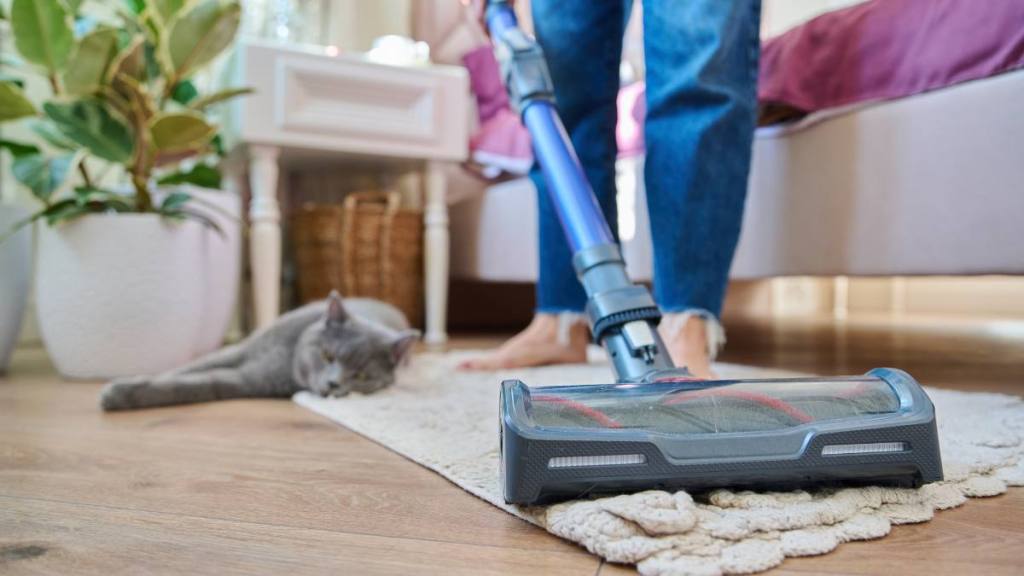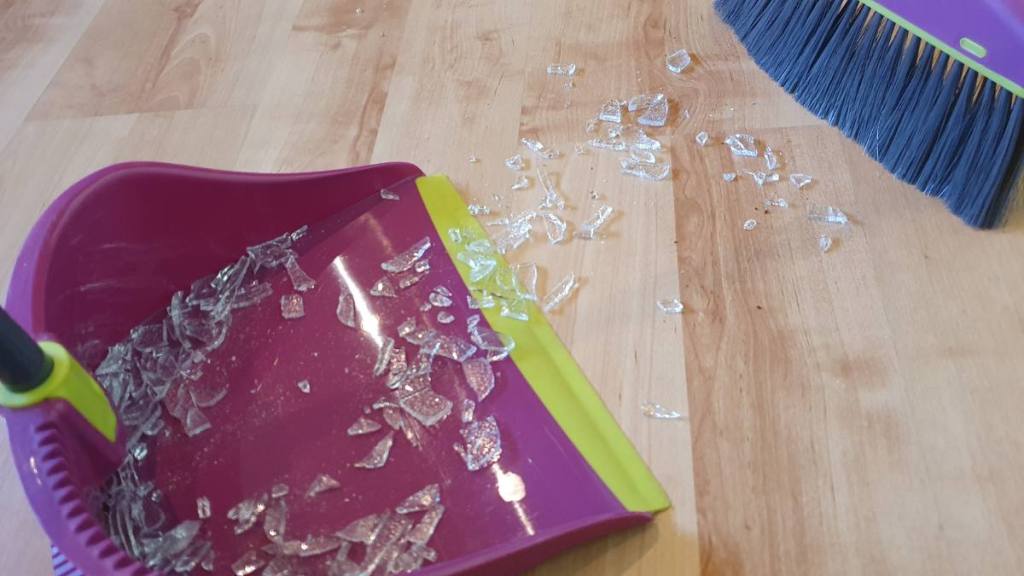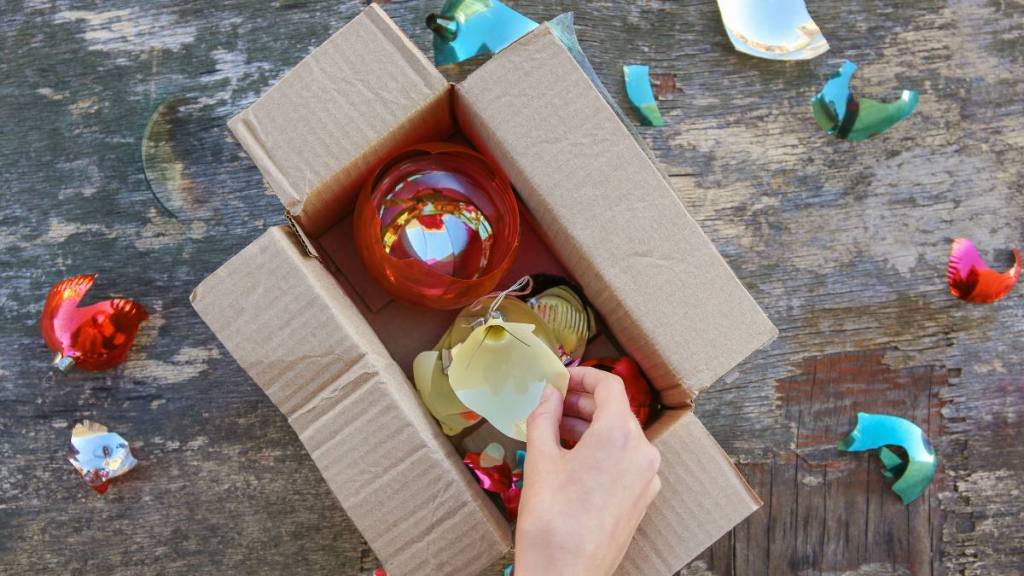Post Time:Dec 27,2023Classify:Industry NewsView:1039
Crying over spilled milk? Doesn’t really happen. Crying over broken glass? All too common. Especially if it’s not cleaned up correctly, more often than not you’ll end up with a small shard or two piercing your foot for weeks after the incident. The good news: Whether you knocked over a wine goblet or a flower vase, learning how to clean up broken glass the right way can minimize the risk of leaving any pieces behind or cutting yourself while cleaning. Read on for the top tips from cleaning pros who do this all the time.
So you dropped a glass and it’s now all over the kitchen floor. Before you dive in, grab all the supplies you may need (more on that below). This is key so that once you’re in the danger zone, you don’t leave it and accidentally track shards out. Also, turn on all the lights for maximum visibility and check the extent of the debris so you know how far out to be looking for pieces.

“The easiest and fastest way to clean up those big pieces is by sweeping,” says Sandra Bohl, Cleaning Technician at TLC Cleaning. According to Deb Sinclair, CPM, a Senior Property Manager at MDL Group, you should do this using “a broom with stiff bristles, employing short, efficient strokes to prevent pieces from scattering.” If they’re too big for a dustpan or you only have a couple of pieces, you can also use tongs.
Can I vacuum broken glass? The short answer is that it depends on the vacuum because, according to Bohl, “you’re at risk of having some small pieces of glass getting stuck in your vacuum that could come out later and hurt someone.” Before you decide how you want to approach cleanup, run through these guidelines from Sinclair:
Steer clear of using a vacuum with a flexible hose or bag, but you can use a handheld vacuum or wet/dry shop vacuum.
If you have a handheld vacuum: Make sure all filters and the collection cup/bag are firmly in place, and go slowly and methodically.
If you have a shop vacuum: Vacuum on “low” to start with and move to the highest suction later to capture the smallest shards. Also, ensure there are no blockages in the hose or collection port.

The small shards of glass are the trickiest to clean up because they’re both hard to see and hard to grab. Here are some surprising hacks, depending what you have on hand:
1. Grab some paper towels: Layer three sheets of paper towels or napkins and fold them into a square. Dampen and press the square onto the glass shards. They will stick to the paper towel for easy disposal.
2. Grab some bread: Wearing gloves, press a slice of soft, fresh bread onto the glass shards and dispose of the bread promptly.
3. Grab a lint roller: Use a lint roller designated for pet hair removal, as it has a stronger adhesive and will do the best job at picking up the glass. Peel away the glass-filled sheet and dispose of it properly.
Related: 15 Ways to Use a Lint Roller on More Than Just Clothes
4. Grab a potato: Slice a potato in half to expose the interior flesh. Press the cut side of the potato onto the glass shards to pick them up easily. Immediately toss the potato into the garbage.
5. Grab duct tape: Wear thick puncture-resistant gloves to wrap duct tape around your hand with the sticky side out. Press the tape on the glass pieces and then carefully toss the tape in the garbage.
Related: One Way To Remove Duct Tape Residue? Use More Duct Tape!
Your first instinct may be to immediately jump into action, but first, you should take stock of who’s around and what you’re wearing. Sinclair recommends you clear the room of people (especially kids) and pets, and “gear up” in closed-toe shoes, eye protection, puncture-resistant gloves, a long-sleeved shirt and long pants. More of her best practices include:
Don’t attempt to separate any pieces that are still attached to each other.
Don’t kneel down on the floor to pick up the glass — instead, use a small step stool and sit.
Don’t handle broken glass with bare hands.
When you’re done, bring your broom and dustpan outside and rinse them well with a garden hose over a bucket. Dispose of the water down a utility drain.
Remember to check the bottom of your shoes for any glass caught in the treads. If you see any, remove it with duct tape or paper towels to be sure that no glass is tracked anywhere.

How you dispose of broken glass is just as important as how you clean it up, Sinclair emphasizes. All of her tips keep safety top of mind:
Create a barrier so that the sharp edges can’t penetrate by wrapping the broken pieces in several layers of newspaper, old towels cardboard, etc.
Place the wrapped glass in a secure package such as a cardboard box or puncture-resistant container.
Label the container as “BROKEN GLASS” in large letters to alert others of its contents. Seal it with packaging tape to prevent spillage during disposal.
Don’t mix with regular trash, as it could hurt sanitation workers and the environment. Remember to package it separately, place it separately at the curb, and label it clearly.
Crying over spilled milk? Doesn’t really happen. Crying over broken glass? All too common. Especially if it’s not cleaned up correctly, more often than not you’ll end up with a small shard or two piercing your foot for weeks after the incident. The good news: Whether you knocked over a wine goblet or a flower vase, learning how to clean up broken glass the right way can minimize the risk of leaving any pieces behind or cutting yourself while cleaning. Read on for the top tips from cleaning pros who do this all the time.
So you dropped a glass and it’s now all over the kitchen floor. Before you dive in, grab all the supplies you may need (more on that below). This is key so that once you’re in the danger zone, you don’t leave it and accidentally track shards out. Also, turn on all the lights for maximum visibility and check the extent of the debris so you know how far out to be looking for pieces.
How to clean up broken glass: Sweep up big pieces first

“The easiest and fastest way to clean up those big pieces is by sweeping,” says Sandra Bohl, Cleaning Technician at TLC Cleaning. According to Deb Sinclair, CPM, a Senior Property Manager at MDL Group, you should do this using “a broom with stiff bristles, employing short, efficient strokes to prevent pieces from scattering.” If they’re too big for a dustpan or you only have a couple of pieces, you can also use tongs.
Can I vacuum broken glass? The short answer is that it depends on the vacuum because, according to Bohl, “you’re at risk of having some small pieces of glass getting stuck in your vacuum that could come out later and hurt someone.” Before you decide how you want to approach cleanup, run through these guidelines from Sinclair:
Steer clear of using a vacuum with a flexible hose or bag, but you can use a handheld vacuum or wet/dry shop vacuum.
If you have a handheld vacuum: Make sure all filters and the collection cup/bag are firmly in place, and go slowly and methodically.
If you have a shop vacuum: Vacuum on “low” to start with and move to the highest suction later to capture the smallest shards. Also, ensure there are no blockages in the hose or collection port.

The small shards of glass are the trickiest to clean up because they’re both hard to see and hard to grab. Here are some surprising hacks, depending what you have on hand:
1. Grab some paper towels: Layer three sheets of paper towels or napkins and fold them into a square. Dampen and press the square onto the glass shards. They will stick to the paper towel for easy disposal.
2. Grab some bread: Wearing gloves, press a slice of soft, fresh bread onto the glass shards and dispose of the bread promptly.
3. Grab a lint roller: Use a lint roller designated for pet hair removal, as it has a stronger adhesive and will do the best job at picking up the glass. Peel away the glass-filled sheet and dispose of it properly.
Related: 15 Ways to Use a Lint Roller on More Than Just Clothes
4. Grab a potato: Slice a potato in half to expose the interior flesh. Press the cut side of the potato onto the glass shards to pick them up easily. Immediately toss the potato into the garbage.
5. Grab duct tape: Wear thick puncture-resistant gloves to wrap duct tape around your hand with the sticky side out. Press the tape on the glass pieces and then carefully toss the tape in the garbage.
Related: One Way To Remove Duct Tape Residue? Use More Duct Tape!
Your first instinct may be to immediately jump into action, but first, you should take stock of who’s around and what you’re wearing. Sinclair recommends you clear the room of people (especially kids) and pets, and “gear up” in closed-toe shoes, eye protection, puncture-resistant gloves, a long-sleeved shirt and long pants. More of her best practices include:
Don’t attempt to separate any pieces that are still attached to each other.
Don’t kneel down on the floor to pick up the glass — instead, use a small step stool and sit.
Don’t handle broken glass with bare hands.
When you’re done, bring your broom and dustpan outside and rinse them well with a garden hose over a bucket. Dispose of the water down a utility drain.
Remember to check the bottom of your shoes for any glass caught in the treads. If you see any, remove it with duct tape or paper towels to be sure that no glass is tracked anywhere.

How you dispose of broken glass is just as important as how you clean it up, Sinclair emphasizes. All of her tips keep safety top of mind:
Create a barrier so that the sharp edges can’t penetrate by wrapping the broken pieces in several layers of newspaper, old towels cardboard, etc.
Place the wrapped glass in a secure package such as a cardboard box or puncture-resistant container.
Label the container as “BROKEN GLASS” in large letters to alert others of its contents. Seal it with packaging tape to prevent spillage during disposal.
Don’t mix with regular trash, as it could hurt sanitation workers and the environment. Remember to package it separately, place it separately at the curb, and label it clearly.
Source: Author: shangyi
PrevResearch Group Develops a Glass Material That Precisely Separates Gases
Tests Begin For Europe’s First Flat Glass Carbon Capture TrialNext